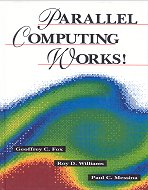This book investigates issues of fine-grained parallelism relevant for future supercomputers with particular emphasis on hypercube architecture. The authors describe how they used an experimental approach to configure different massively parallel machines, design and implement basic system software, and develop algorithms for frequently used mathematical computations. They also devise performance models, measure the performance characteristics of several computers, and create a high-performance computing facility based exclusively on parallel computers. By addressing all issues involved in scientific problem solving, Parallel Computing Works! provides valuable insight into computational science for large-scale parallel architectures. For those in the sciences, the findings reveal the usefulness of an important experimental tool. Anyone in supercomputing and related computational fields will gain a new perspective on the potential contribution of parallelism.
This book is concerned with mapping the spatio-temporal structure of a problem onto the most appropriate parallel computer architecture and its associated spatio-temporal structure.
